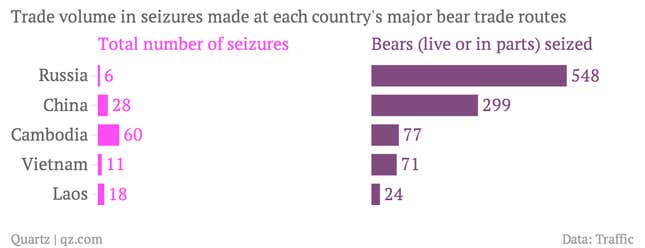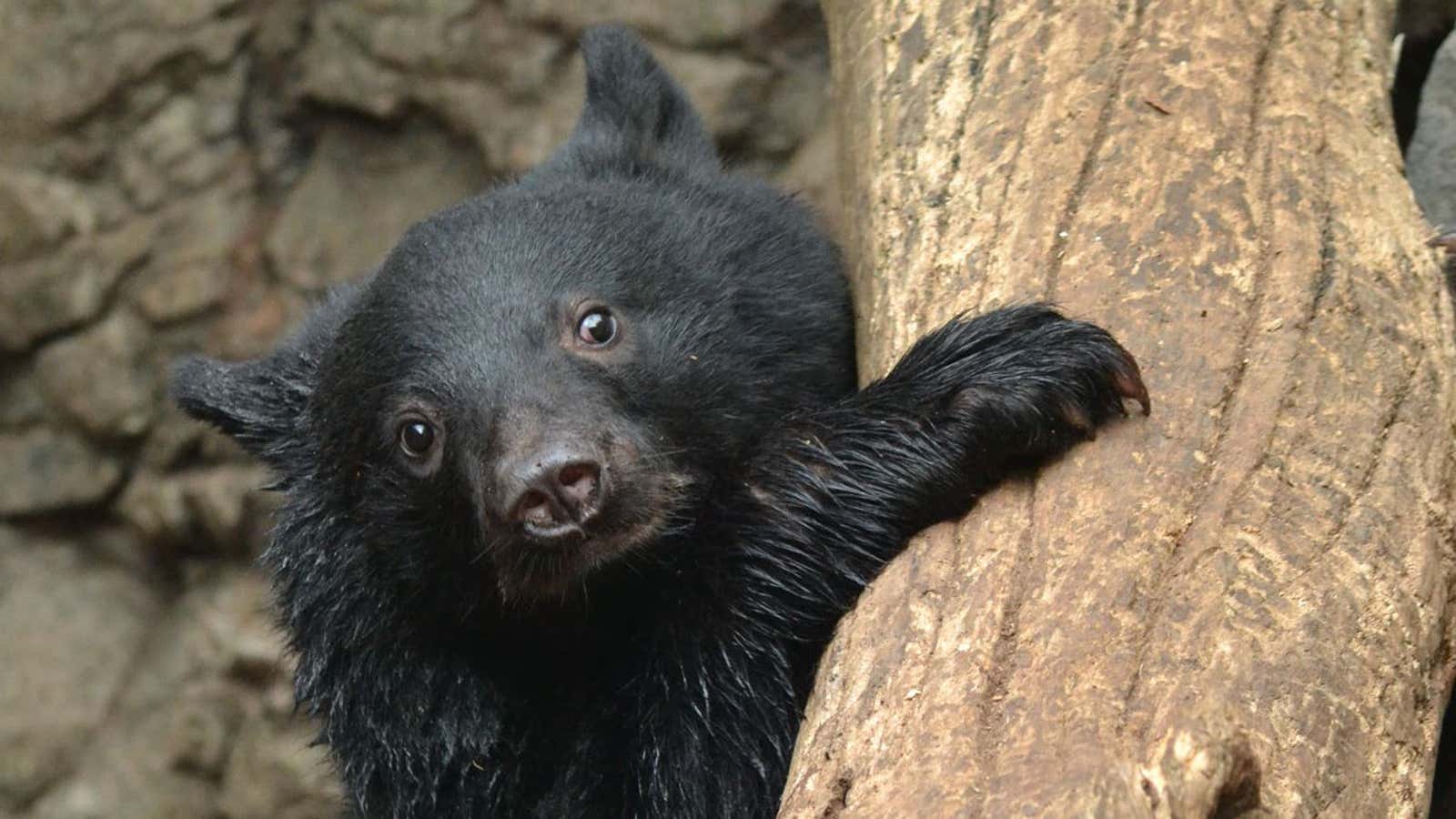Live, dead, or in parts, the bears of Asia are in heavy demand. In India they are valued for their dancing. In Vietnam and Cambodia, bears are raised so farmers can harvest their bile for use in traditional medicine. Bear paws smuggled from Russia into China, where they’re prized as an exotic meat or a medicinal soup, can fetch an average of $8,500 a set, 20 times what they’re worth before crossing the border.
Of course, all of that is illegal. No one is certain how big this trade is, but a recent study by Traffic, a wildlife trade monitoring group, estimates that the illegal Asian bear-smuggling network is big enough to threaten the continent’s population of wild bears. Between 2000 and 2011, authorities in Asia made 700 seizures, equivalent to a minimum of 2,800 individual bears (though data from the last two years is incomplete, it suggests similar trends in demand). And confiscated shipments are but a small fraction of the illegal trade in bears and their parts, says Traffic. Here’s our visual guide to this complicated trade:
Asia makes up the bulk of the illegal bear trade. Demand for bears and their parts varies dramatically by country:
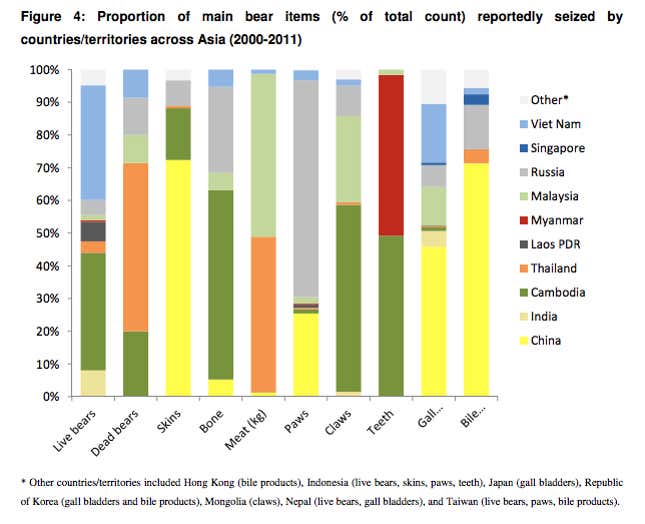
Russia and China dominate the trade; Vietnam and Cambodia are distant runners up:
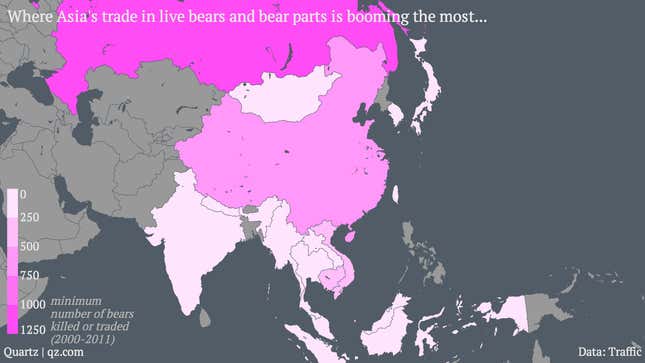
Thanks to bustling Sino-Russian cross-border trade, 70% of the bears seized in illegal shipments from 2000 to 2011 came from Russia or China:
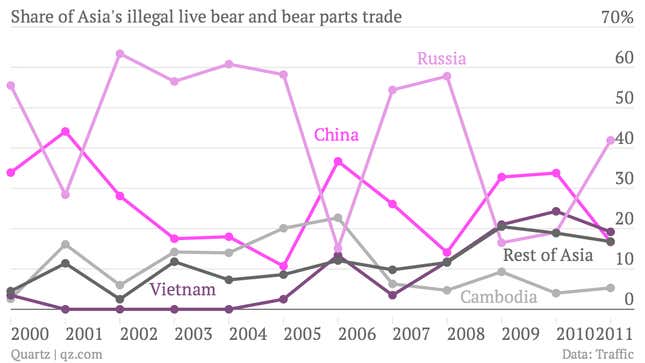
China is both a big importer of bear derivatives—paws, bile, and gall bladders—and a major exporter of illegal bear parts (though not shown here, the US is a major export destination):
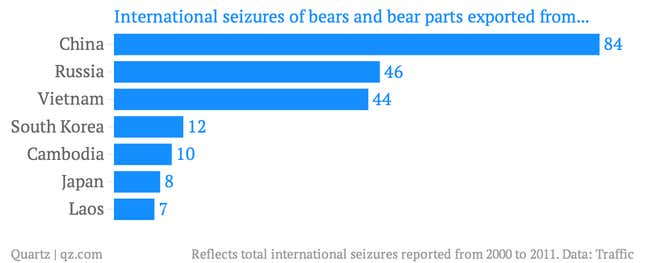
With the world’s largest wild population of brown bears, Russia is naturally a big supplier:
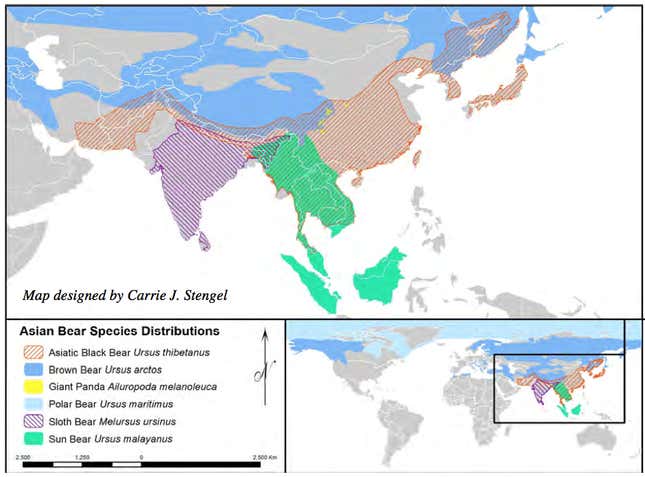
Russia has a low number of seizures but a high number of bears per seized shipment, suggesting a big black market. Cambodia’s numbers, on the other hand, reflect its stepped-up enforcement efforts:
